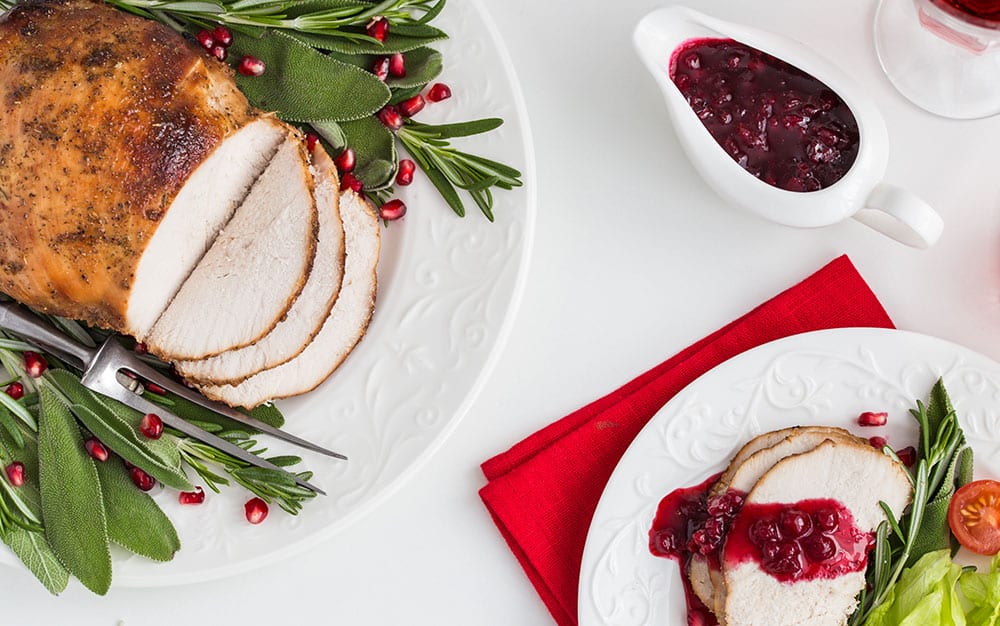Nothing beats a Christmas dinner. Hopelessly indulgent and completely enormous – it’s the one meal we look forward to all year.
Amidst all the hectic supermarket runs and last minute shopping, did you ever stop to think how wonderful it would be to serve your own home grown cranberries on Christmas day? Not only will they taste even better that shop bought, you’ll also be able to shorten your shopping list and save a little money along the way.
Cranberry sauce has long reigned as the champion accompaniment to our turkey on Christmas day; that perfect zingy sweetness is something we simply couldn’t be without.


Cranberries are also famous for being high in vitamins and delicious when juiced, so what better reason to start growing your very own? If you start now, you’ll have freshly picked cranberries ready for making into a delicious sauce for next Christmas.
You could even make up jars of your own home-grown cranberry sauce, and be giving them as gifts next year!
Here’s a full guide on how to plant, grow and harvest cranberries in your own garden.
Cranberry plants make great ground cover as they are dense, low-growing shrubs. Like blueberries, they are also ericaceous plants, which means they prefer acidic soil and cannot tolerate the lime found in alkaline soils. Acid and alkaline refer to the pH of your soil which can be tested using a DIY kit available at most garden centres
Planting

If your garden soil is naturally alkaline, you should consider growing your plant in a container, or raised bed which can be filled with ericaceous soil. They also prefer very moist soil, so if you are growing in a container, it’s a good idea to line it with polythene with some holes perforations. The polythene will stop the moisture draining out of the soil so quickly.
As cranberry plants can take several years before they bear fruit when grown from seed, it is a better idea to buy a cranberry plant from a garden centre that is ready for planting in the garden and will fruit quickly once established.
Step One cranberries
Cranberries are best planted, during mild weather from November to April and you should prepare the planting site at least three weeks in advance.
They need a moist but sunny location which rich acidic soil, and can be planted in containers or hanging baskets to ensure they get the right soil type and conditions.
Tip:
Add sequestered iron,
or rusty nails to your soil
to improve acidity.
Step Two

Make sure all weeds are removed and then dig a hole for planting about 6 inches deep in your prepared site.
Gently pull your cranberry plant from its pot and place into the planting hole, firming in well with the surrounding soil.
If planting more than one, make sure you leave plenty of space between each plant, as they do spread quite a bit.
Step Three
Water in well and keep the area free of weeds.
Aftercare
Regular watering to keep the soil moist to the touch is necessary for your cranberry plant to thrive.
You can also use a nitrogen based feed occasionally to encourage plant growth, and using an organic mulch is also helpful.
Every few years you may need to cut out any dead wood and prune back any overzealous stems to boost your berry production.

Harvesting
Depending on the age of the plant you purchased, it may be a year or two before you see a plentiful berry harvest. The berries will start to appear in late august through to November, and they are ripe once they are deep red on the outside with a brown seed on the inside.


Try to harvest all your berries before the first frost, picking them off the plant carefully by hand. They can be stored for up to two months in the fridge in airtight containers, or they can be boiled down with some sugar and orange juice to make cranberry sauce, which can then frozen and simply defrosted when needed.
Once all the berries have been harvested, it is recommended to mulch around the plants using pine cuttings to protect them from frosts over winter.
With a bit of luck, you’ll soon be serving rich and delicious cranberry sauce to guests over your festive treats for years to come.


Leave A Comment